A visit to Woburn Abbey, the home of the English Duchess who started the afternoon tea tradition.
Photos: Gardens by Vincent Gauci Interiors by Woburn Abbey
An afternoon at Woburn Abbey sprawled deliciously before us, as did a two-mile drive through the Deer Park to reach the Abbey. The autumn leaves glittered against a deep blue sky, the doe and stag nonchalantly turning their heads to watch us pass them – what an incredible welcome, both now and if we’d been arriving in a carriage 200 years ago. We spied the Abbey through the gaps in the trees after we’d stopped to allow a herd of deer (there are nine species freely roaming the park) to dash across the road. It felt like we were on a very English safari.
Woburn Abbey was originally founded in 1145 as a Cistercian monastery and abbey. In 1538 it was seized by the Crown during the Reformation and has been in the Russell family since 1547 after it was gifted to Sir John Russell, the First Earl of Bedford, in Henry VIII’s will. The Abbey is still home to the 15th Duke of Bedford and his family.
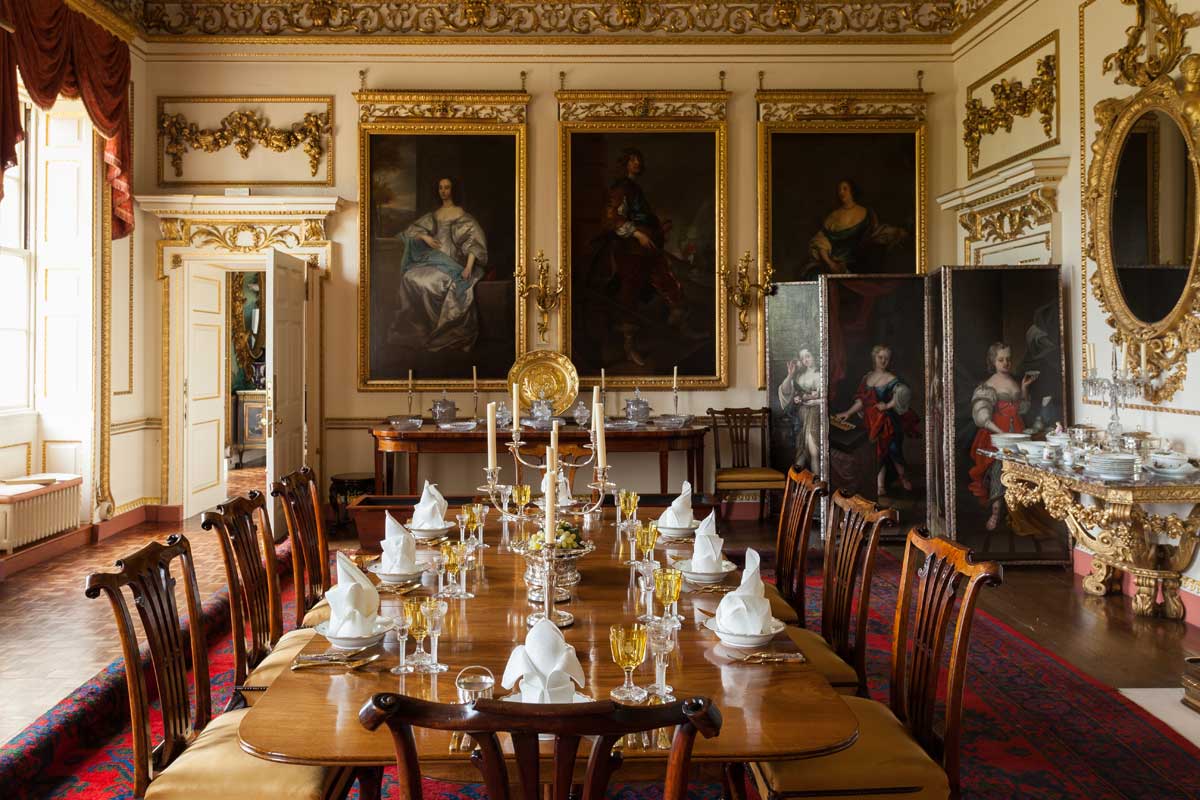
We took a stroll around a few of the 28 acres of gardens: we conquered the 1833 Hornbeam maze – complete with Chinese pagoda at the centre – after discovering a ready-to-play croquet set on the lawn; climbed the Rockery, peered into the Aviary, and walked past trees which have seen many Earls and Dukes walk beneath them. The 5th Duke Francis began great improvements to the garden and house after returning from his Grand Tour of Europe in 1787, and Henry Holland was commissioned to build the indoor riding school and tennis court (both now gone due to dry rot), the Chinese Dairy and the Conservatory (known today as the Sculpture Gallery). The 6th Duke continued his brother’s work by commissioning garden designer Humphry Repton to produce designs for improving the gardens and park, his ideas written and illustrated in Repton’s 1804 ‘Red Book’. Many of the gardens’ features today are based on Repton’s original designs, as well as designs from the current gardeners.
The Duchess’ Tea Rooms are nestled in the gardens before you head into the Abbey. The Duchess herself was Anna Marie, the 7th Duchess of Bedford, who famously complained of ‘having that sinking feeling’ in the late afternoon. During the early nineteenth century, it was usual for people to take only two meals a day – breakfast and then dinner at around 8pm. The Duchess decided a pot of tea and a light snack was needed to help her through until dinner, taken in her rooms during the afternoon.
While full afternoon tea is available in the lavish Bedford Room, we settled down in the sunshine to eat generous and delicious slices of homemade honey, orange and parsnip cake – the parsnips grown in the the kitchen garden of the Abbey – squidgy lemon cake, and a gluten free and vegan harvest apple cake.
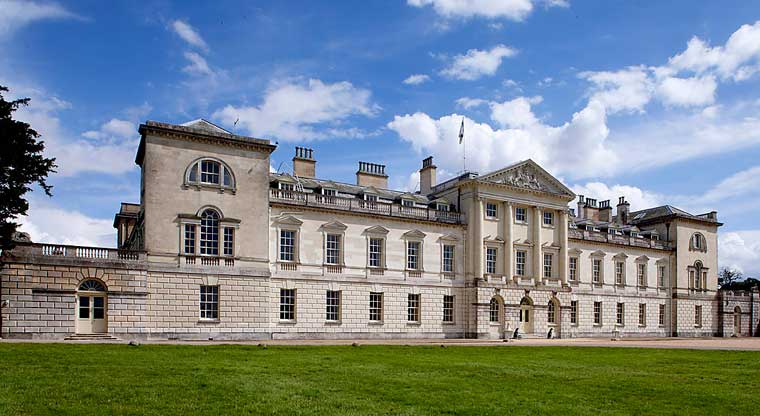
Woburn Abbey itself is grand room after grand room of history, family legacy and incredible art. The family have one of the most important private art collections in the world and as a visitor you can see pieces which you would expect to view in the National Portrait Gallery or National Gallery. The 4th Duke started the collection which now consists of 12 paintings by Joshua Reynolds, three by Gainsborough, paintings by Hogarth, Lely, Tintoretto and 10 by Van Dyck. The Dining Room alone has 21 Venetian views by Canaletto bought by the 4th Duke while on the Grand Tour in the 18th century, an incredible room which left me feeling elegant just by standing in it.
Rembrandt’s ‘Portrait of an Old Man’ has been part of the collection since 1791 when it was noted in Abbey records as being cleaned, but it could have arrived at the Abbey earlier. The Long Gallery, where originally over one hundred portraits hung, hosts Gower’s 1588 painting ‘The Armada Portrait’ of Queen Elizabeth I, one of the most famous portraits of the monarch in the world.
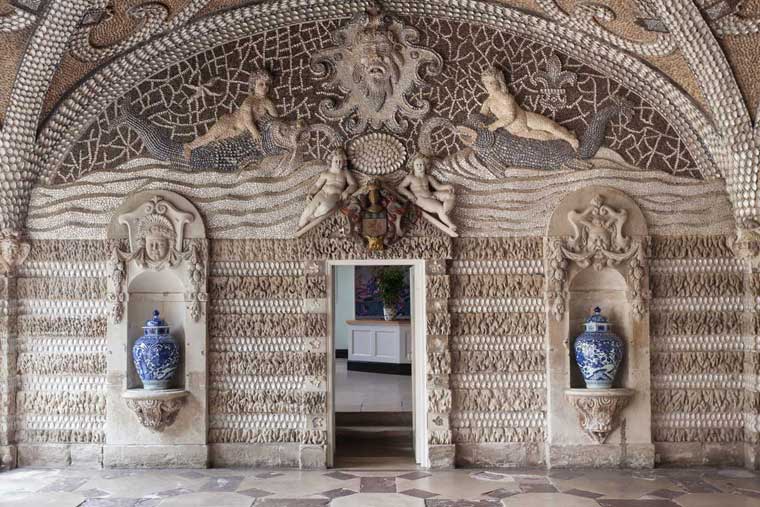
Of course, the house itself is a work of art, even though it has been rebuilt and restored, remodelled and redecorated many times since the Russell family moved in during the 16th Century. Walking from room to room we marvelled at the rich colours, fabrics, care taken in restoration and details in the design. The State Saloon is simply incredible with its vaulted ceiling and dramatic views in either direction across the grounds, with Roland Pym’s 1970’s mural around the walls showing the interests of the Russell family over the years.
The Blue Drawing Room, lined with an exact paper copy of the original blue silk wall-hanging, is where the ladies would go for tea. While looking at the extensive porcelain collection in another part of the house, I couldn’t help but imagine which pieces Anna Marie and her guests would have used over the years.
Woburn is also known for another famous Duchess – The Flying Duchess. Mary was the wife of the 9th Duke of Bedford and after considerable efforts as a nurse during the First World War, where parts of the Abbey were turned into wards, she took up flying at the age of 61. After setting out to complete 200 hours of solo flying, Mary disappeared.
In the Queen’s Bedroom, the room Queen Victoria stayed in during her visit to the Abbey in 1841, there are some fine sketches by the Queen and Prince Albert. They were a gift to Anna Marie, wife of the 7th Duke, who had been one the monarch’s ladies-in-waiting.
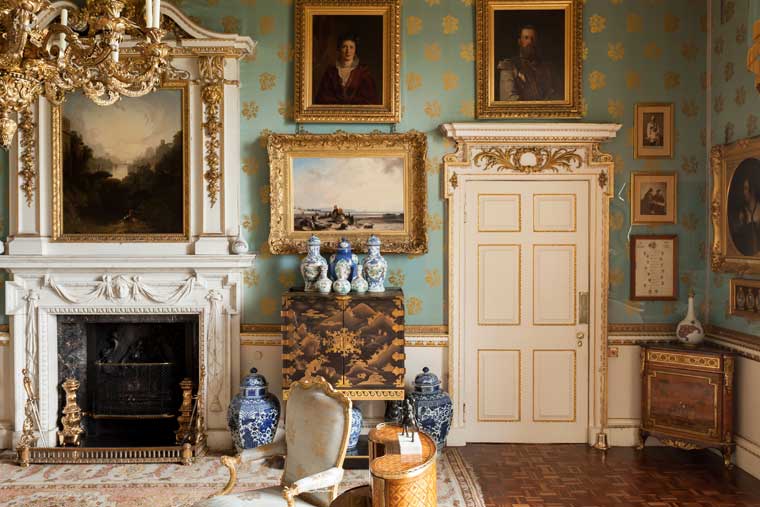
There are too many rooms to give credit to here, each one full of splendour and elegance – there is a Grotto decorated entirely by shells; the crypt holds the extensive gold and silver collections; the Racing Room and the Chinese Rooms, the Holland Library designed by Henry Holland during his redevelopment of the south wing.
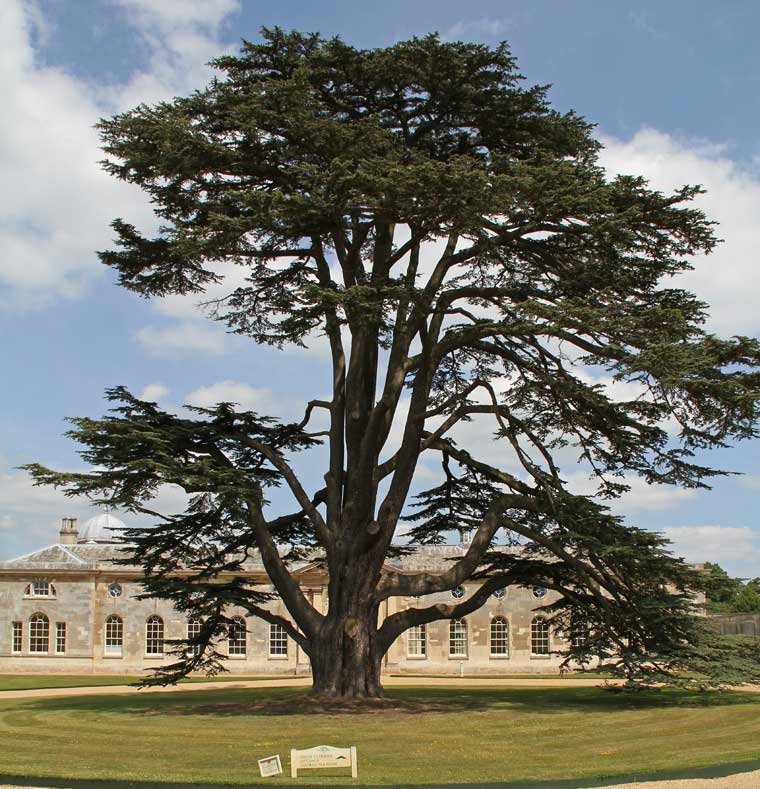
Woburn Abbey may have 400 years of history, but it has first and foremost been a home. The current Duke’s toast rack collection is on display in the Dukes’ Corridor which is lined with portraits of the Dukes’ through the years. The Breakfast Room really is a breakfast room, the Dining Room used recently for her Grace’s birthday celebrations. Old portraits may line the walls but photographs of the current Duke’s family stand on the furniture. The guides also help to create a welcoming atmosphere to the house with their friendly smiles as they pass on their knowledge and enjoyment of the Abbey – we even heard a whispered story of the current Duke skateboarding through the State Saloon when he was a child!
The Abbey has been open to the public since 1955 so it’s high time it has a rest from its duties – the Abbey will be undergoing extensive renovation from August 2019 and will reopen in the Spring of 2024. The gardens are as busy and bustling as the Abbey, with talks and walks, Shows, floral art study days and planting lessons so when you book a visit – and an afternoon tea – after the renovations are complete, be sure to enjoy Woburn Abbey outside as well as in.
Woburn Abbey and Gardens are currently closed to facilitate a major refurbishment, you can watch the progress on Instagram. Woburn Abbey and Gardens will reopen in Spring 2024. www.woburnabbey.co.uk
Woburn Abbey and Gardens
Woburn, Bedfordshire, MK17 9WA, UK
Tel: +44 (0)1525 290 333




